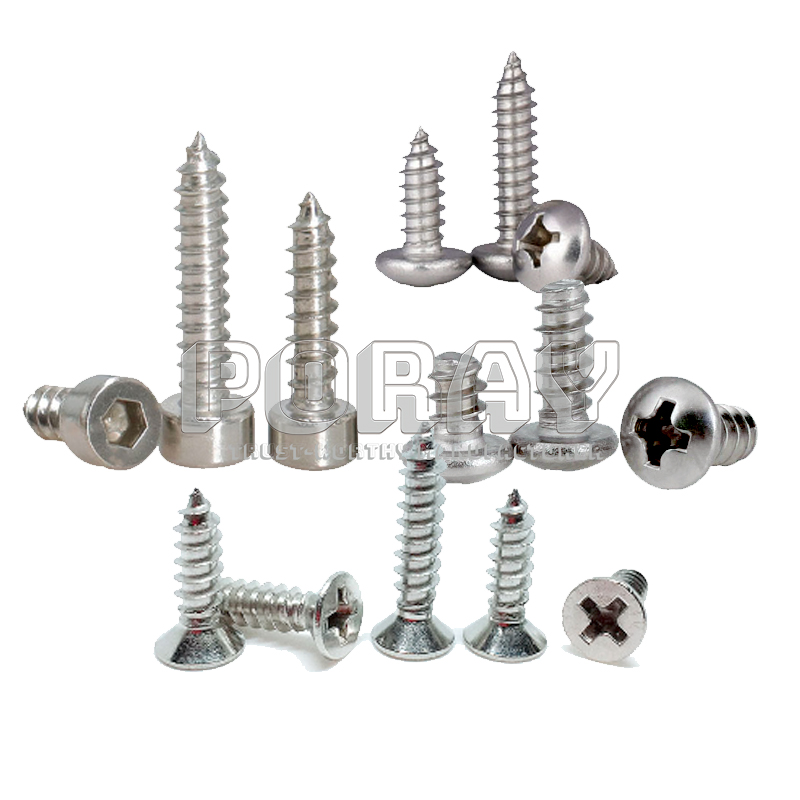
Self-Tapping Screw, Metal Screw, Sheet Metal Screw, Tapping Screw, or Tapper Screws, Self-Drilling Screws:
Main Categories:
Countersunk or flat head self-drilling screws
Allen or socket head self-tapping screws
Bugle head self-tapping screws
Button head, dome head and pan self-tapping screws
Flange head self-tapping screws
Hex head / Socket self-tapping screws
Wafer head self-tapping screws
Pan head self-tapping screws
Pancake head self-tapping screws
Square head self-tapping screws
Truss head self-tapping screws
Self-tapping screws have various names. They’re often called metal screws, sheet metal screws, tapping screws, or tapper screws.
Their tips come in different shapes: pointed (like a pencil), blunt, or flat, and they are described as thread-forming, thread-cutting, or thread rolling. If the screw is pointed, it will be thread-cutting – tapping and creating threads in a pre-drilled hole. If the tip is flat, it is thread-rolling – rolling or extruding threads and creating zero clearance between screw and material.
The most important difference between self-tapping and self-drilling screws is that self-tapping screws cannot go through metal without a pilot hole, which must be pre-drilled or pre-punched.
There are two types of self-tapping screws, thread-forming and thread-cutting.
Thread-forming self tapping screw: Before you can use these screws you will need to drill a pilot hole as the screw itself does not contain a pointed tip. Thread-forming screws are usually used to join plastic materials together. Due to their design they typically grip material more tightly. Care should be taken as there is a risk of over-tightening the screw, which can result in joined materials breaking from the pressure.
Thread-Tapping self-tapping screw: These screws do not require a pilot hole but one can be drilled to make fastening easier. Remember to make the pilot hole smaller than the diameter of the thread tapping screw. Thread-tapping screws remove material and create a path for the screw. The drawbacks to using this type of screw is when they are removed it can result in stripped threads. If you experience stripped threads you should use a larger thread-tapping screw when reattachment is made.
